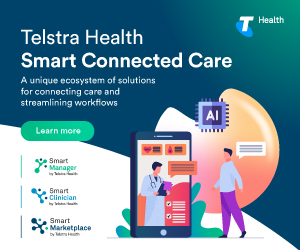ePrescribing FAQs
This in-depth FAQ includes contributions from the ADHA, and covers everything you need to know about ePrescribing and how it works.
Q: Are there different State and Territory regulations for electronic prescriptions?
The same regulations for prescribing and supplying medicines exist for both paper and electronic prescriptions. Clinicians are required to adhere to the National Health Act and relevant State or Territory regulations when prescribing and supplying medicines using an electronic prescription. This is particularly important for controlled medicines. Please contact your relevant jurisdiction for more information.
Q: Does a patient on multiple medications needs multiple tokens?
Yes, the token model allows for only one token to be issued per medication.
Q: Are there safeguards to prevent patients using their token at multiple pharmacies?
The token itself is not the prescription, however it is an evidence of a prescription. Once the token is scanned and used by a pharmacy to dispense the medicine, it is invalid and cannot be reused. The Prescription Delivery Service (PDS) will lock a script as soon as it is accessed, so no other pharmacy can dispense it at the same time.
Q: Where do I send the token?
The token can be sent to the patient via SMS or email address which the prescriber can validate at the time of generating the prescription.
Q: Can I set a default for SMS, email or paper prescriptions in my clinical software?
The Government has deemed that the choice of SMS, email, paper token or Active Script List is up to the patient to decide, so a default will not be available.
Q: Will patient mobile numbers and email addresses auto-populate in my clinical software, so I don’t have to enter them every time?
Yes. The SMS field and the email address will auto-populate from the patient record if the mobile phone and email address are available. Patient mobile number or email address can also be updated from the ePrescribing preview screen. We recommend that you confirm the patient’s mobile phone number and email address in case they have changed since they were entered, and that you confirm the electronic script has been received during the patient consultation.
Q: Is there a cost associated with sending electronic prescriptions via SMS?
In light of COVID-19, the cost of SMS is currently being subsidised by the Government until at least the 30th of September 2020. We’ve been told that this free period will be extended, but likely to be revised by the Government on a month-to-month basis. After this period, SMS costs will be passed onto practices – the price of which hasn’t been finalised yet as we work with suppliers to bring this cost down as much as possible. Use of email messages is free, as are paper tokens and paper prescriptions.
Q: Do printed tokens need to be on PBS stationery?
No. The printed token is in a new print format, it cannot be printed on standard PBS stationery. It should be printed on plain A4 paper.
Q: Does the patient have to get all repeats from the original pharmacy or can they take their token to different pharmacies?
The patient will always have a choice to get their next repeat dispensed at a different pharmacy and present the new token.
Q: Can a patient be provided with both a paper prescription and an electronic prescription?
No. Doing this would be providing patients with double the dosage as both scripts could be dispensed. Prescribers must select one method of prescription.
Q: Are repeats accessed from the original token?
If a patient has repeats on a prescription, the pharmacy will send them a new token for their next repeat. The patient will need to give the new token to the pharmacist when it is time to get their medicine.
Q: Can carers with smart phones receive the prescription token on behalf of the person they care for who do not have a smart phone?
Yes, the patient can forward the SMS or email containing the token to their carer/agent. Alternatively, the patient may also ask their prescriber to send the token directly to their carer/agent, during the consultation.
Q: Can GPs send tokens directly to a patient’s preferred pharmacy if the patient doesn’t have a smart phone/access to email?
No. There are options available for patients who are not able to access electronic prescriptions, these include:
- the patient can ask their prescriber to send the token directly to their carer/agent
- receive a paper prescription.
Q: Will the patient be notified when an electronic prescription is deleted or cancelled?
The prescription will show as cancelled, if the prescription has not yet been dispensed.
Q: Are patients at risk of getting two sets of supply, if an electronic prescription is resent?
Resending an electronic prescription token creates a copy. It does not create a second electronic prescription in the prescription exchange service. So, when the first token is presented at a Pharmacy, the medication will be dispensed. If a patient attempts to present the second token, the Pharmacist will be advised that the medication has already been dispensed.
Q: Can Administration staff in the practice resend electronic prescriptions?
No. Only prescribers can resend electronic prescriptions.
Q: Can patients without a Medicare number/IHI number use electronic prescriptions?
If a patient does not have a Medicare number or IHI number, you will not be able to issue them with an electronic prescription. You will need to print a paper prescription instead. This is a Government requirement.
Q: What happens if the token is sent to the incorrect person’s email or phone number?
The prescriber should confirm the patient has received the token via email or SMS before ending the consultation. In the event that a token was incorrectly sent, the prescriber should cancel the prescription and generate a new token in the case the token has been sent to incorrect mobile number/email.
Q: Do patients require a mobile internet connection to receive an electronic prescription?
Patients will require internet, as the token is sent via a link in SMS. For patients who do not have mobile internet connectivity, a paper prescription is recommended.
Q: Will there be electronic prescribing available if I use a paper-based medical record?
Participation in electronic prescriptions requires a conformant Clinical Information System (CIS) that is capable of authoring an electronic prescription. Contact your software provider for further information.
Q: How can I set up electronic prescriptions?
To prepare for electronic prescriptions, you will need to ensure the practice has:
- registered for a Healthcare Provider Identifier-Organisation (HPI-O) and is connected to the HI service;
- installed eRx;
- the latest version of clinical software – for MedicalDirector Helix users, ePrescribing is made immediately available for you – and;
- updated patients’ and their carers’ contact details (mobile phone number/email).
Q: How can I register for HPI-I and HPI-O numbers?
You will need to register for one through the HPOS Portal.
Q: Do patients need to download an app to access electronic prescriptions?
No. The token QR code can be accessed via a link, in SMS or email.
Q: Can the token be sent to 2 mobile numbers (patient and carer/family member)?
At the time of generating or dispensing a prescription, the token can only be sent to one mobile number or email address. The patient can forward a text message to their carer so both mobile numbers have a copy of the token if required.
Q: Does the token need to be kept for any repeats?
No. Once an electronic prescription is dispensed, the initial token can no longer be used, and a new token is issued by the dispensing pharmacy for the repeat. The new token will need to be kept for when more medicine is needed.
Q: How do scripts owing work with electronic prescriptions?
For script owing, you can send a printed prescription, as per your previous workflow, or you can generate an electronic printed token and send that to the applicable pharmacy. SMS and email tokens are not available for the script owing workflow.
Q: Can patients get electronic prescriptions if they don’t have My Health Record?
A patient does not need to have a My Health Record to receive an electronic prescription.
The patient must have an Individual Healthcare Identifier to receive an electronic prescription. This is a unique 16-digit number that is assigned to all individuals enrolled in Medicare or the Department of Veteran Affairs (DVA).
Q: Is written consent required from the patient for electronic prescriptions?
Written consent is not required for the token model.
By the end of 2020 the Active Script List (ASL) will provide another option for the way patients manage their electronic prescriptions. For this option, a patient must register for an Active Script List which will require a patient to provide their consent to which healthcare professionals can access their ASL.
Q: What will the patient see when they receive an SMS or email?
The message will have the patient’s name, a barcode and some information about the medicine. No instructions will be included.
Q: Does the pharmacy need to see the original prescription for S8 medications?
The pharmacy will only need the paperless electronic prescription token that the patient will present at the Pharmacy. There is no need to send a paper version. In your software, there is a new text box towards the bottom of the prescribing screen that allows you to type any messages that you would previously have hand-written on the script. Please ensure you adhere to State legislation requirements. Warrant numbers are required for S4D drugs.
Q: Why is the ASL not available immediately?
The ASL is a more complex technical build and as such is taking longer than the token model to build. It will be available from late 2020.
Q: How is the information in the token secure if it is sent via a “normal” email?
The QR Code holds an identifier which is a key used by the Prescription Delivery Service (PDS) to pull the prescription details from the database. The identifier is meaningless unless scanned in a PDS with the required connectivity and authorising processes in place to check for a legitimate and legal request to the information.
If you still have any questions about ePrescribing or you have any trouble using ePrescribing in MedicalDirector, please contact us via Live Chat.









